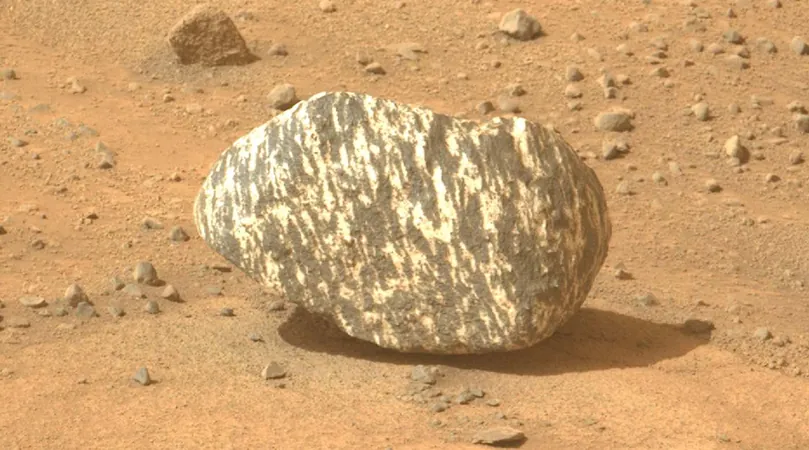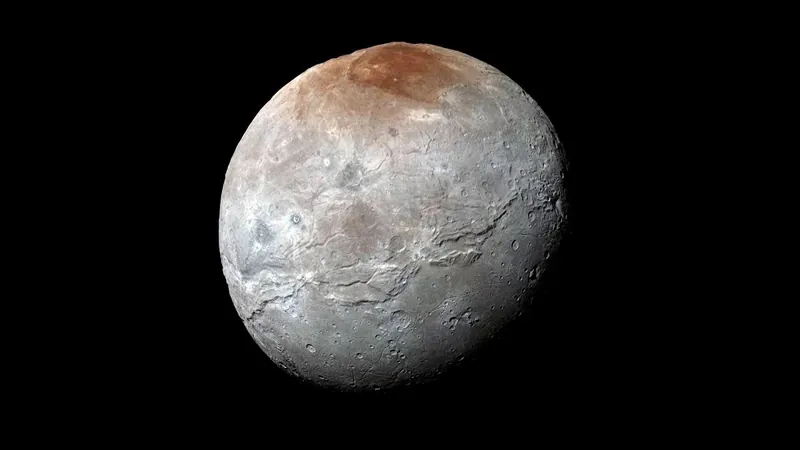
NASA Buzzing Over Unusual 'Zebra Rock' Discovery on Mars
2024-10-02
Author: Rajesh
NASA Buzzing Over Unusual 'Zebra Rock' Discovery on Mars
In a fascinating find, NASA's Perseverance Mars rover recently stumbled across a peculiar rock on the Martian surface that has scientists buzzing with excitement. This striking rock, adorned with distinctive black and white striations reminiscent of zebra patterns, suggests Perseverance is entering a region ripe for groundbreaking discoveries.
Captured by the rover's Mastcam-Z, the curious rock stood out dramatically against its surroundings, prompting the Jet Propulsion Laboratory (JPL) to delve deeper into its examination. As the rover ascends the expansive Jezero Crater, the team is hopeful that this fetches more insights into the geological history of Mars.
Perseverance, which has already gathered samples of ancient river sediment, is now journeying to higher terrains in its quest for more ancient rock formations. In a notable earlier discovery, the rover encountered a sparkling white boulder composed of feldspar and pyroxene while traversing Mount Washburn. This rock, measuring about half the size of the newfound 'zebra rock', has since garnered substantial interest.
"We've been overwhelmed by the online speculation regarding what this ‘zebra rock’ represents, and it has been a joy to read everyone's theories!" said Athanasios Klidaras, a Ph.D. student at Purdue University collaborating with the Perseverance mission team.
Understanding the formation of rocks is key to interpreting what this 'zebra rock' could reveal. Rocks are generally categorized into three types: sedimentary, igneous, and metamorphic. Sedimentary rocks form from layers of soil and organic materials compressed over millennia; igneous rocks originate from cooled magma; while metamorphic rocks, such as granite and slate, are created under high pressure and temperatures.
Freya Castle, the name given to this intriguing rock, is thought to be a metamorphic fragment. If this hypothesis holds true, it could unlock further understanding of Mars' volcanic history. The geology of Jezero Crater, primarily composed of sedimentary layers and Martian bedrock, signals that this rock likely tumbled downward from an elevated region of the crater at some point.
Excitingly, Klidaras and his research team are on the lookout for other deposits of this rock type. The presence of additional samples could provide crucial insights into whether these stones originated from the crust due to a massive impact event in Jezero's past or are remnants from significant volcanic activity that occurred eons ago.
As the Perseverance rover continues its exploration, the discoveries from Mars only seem to multiply, igniting curiosity and anticipation about what new secrets the Red Planet might unveil. Stay tuned, as the saga of Mars exploration still has many chapters left to unfold!



 Brasil (PT)
Brasil (PT)
 Canada (EN)
Canada (EN)
 Chile (ES)
Chile (ES)
 España (ES)
España (ES)
 France (FR)
France (FR)
 Hong Kong (EN)
Hong Kong (EN)
 Italia (IT)
Italia (IT)
 日本 (JA)
日本 (JA)
 Magyarország (HU)
Magyarország (HU)
 Norge (NO)
Norge (NO)
 Polska (PL)
Polska (PL)
 Schweiz (DE)
Schweiz (DE)
 Singapore (EN)
Singapore (EN)
 Sverige (SV)
Sverige (SV)
 Suomi (FI)
Suomi (FI)
 Türkiye (TR)
Türkiye (TR)